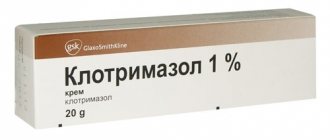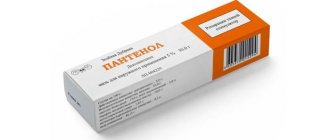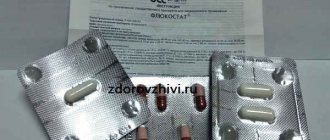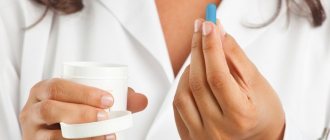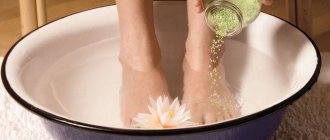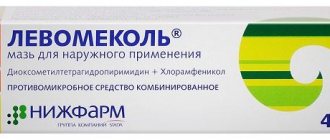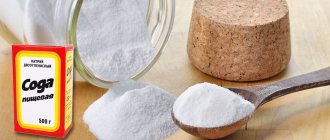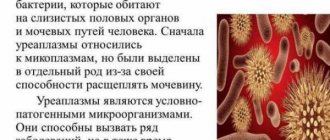Symptoms of thrush
- The causative agent of thrush is sensitive to clotrimazole (this is determined using a sensitivity test).
- The patient is allergic to other antifungal agents (polyene antibiotics and thiazoles).
- The fungus has reduced sensitivity to nystatin (which is most often chosen for prophylaxis during long-term antibiotic therapy and hormone therapy).
- The affected skin and mucous membranes are dry and flaky (the ointment contains moisturizing components, and the dense oily structure does not allow liquid to evaporate from the treated surface).
The ointment is prescribed:
- for the treatment of acute and chronic forms of urogenital thrush (candidal balanitis and balanoposthitis, urethritis);
- for the treatment of candidiasis of the skin of the genital organs (scrotum, inguinal folds);
- for the prevention of a chronic process after the end of complex treatment of thrush;
- to prevent relapse (recurrence) of the disease during long-term use of antibiotics or for any conditions that weaken the general immune system.
Clotrimazole helps get rid of not only thrush, but also other fungal diseases - trichophytosis, epidermophytosis, skin microsporia, fungal nail disease. In this case, the course lasts up to 4 weeks, if necessary it is repeated after some time.
Click on photo to enlarge
The name “thrush” is associated with the symptom – whitish discharge with the consistency of cottage cheese. Candidiasis rarely affects male genitalia, due to physiological characteristics.
Often the disease in the stronger sex occurs without pronounced symptoms. The manifestation of symptoms of the disease makes it necessary to prescribe effective drug therapy for men with thrush.
Signs of candidiasis:
- the appearance of a whitish coating on the penis;
- painful sensations when urinating;
- discomfort during sexual intercourse;
- burning and increased dryness of the penis;
- itching in the head area;
- repulsive odor;
- swelling in the foreskin area;
- red rash.
Symptoms of candidiasis are similar to those of other ailments. A consultation with a urologist will confirm the diagnosis and prescribe effective therapy.
Without treatment, the disease spreads to other organs, causing complications:
- vesiculitis;
- prostatitis;
- disorders of the kidneys and bladder.
Important! The later the fight for recovery begins, the longer and more difficult it will be.
https://youtu.be/i0XkUMAxsl4
Preventive measures
To prevent thrush, you need to follow these basic tips:
- Strengthen and continuously support your immune system
- Carefully monitor intimate hygiene
- Wear underwear made from natural fabrics
- Avoid a chaotic sex life
- Protect sexual contacts
- Diagnose sexually transmitted diseases promptly.
https://youtu.be/lCOD_xznLmk
The psycho-emotional state of a man is also of great importance. In the case of thrush, the opinion that our diseases are related to the condition of the nerves remains relevant. Try to experience more positive emotions. Rest is also one of the important preventive measures. Modern men devote a lot of time to work, while without proper sleep, immunity quickly declines, and the body becomes an easy target for a wide variety of infections.
If you still have pressing questions about thrush that you did not find answers to in this publication, contact our specialist.
Fungi are natural components of the body; their complete elimination is not possible. But it is necessary to take preventive measures to prevent the excessive development of Candida:
- compliance with personal hygiene rules;
- when having sexual intercourse with an unfamiliar partner, use barrier methods of contraception;
- periodically (at least once a year) undergo medical examinations to detect sexually transmitted infections;
- it is desirable to have sexual relations with a regular partner;
- balanced diet;
- Preference should be given to cotton underwear.
Compliance with preventive measures is recommended for everyone, especially those who have encountered fungal diseases and have used clotrimazole for thrush in men.
The following categories are most susceptible to the disease:
- patients with diabetes mellitus;
- having endocrine pathologies;
- using hormonal drugs;
- took antibiotics;
- those with weakened immunity and chronic diseases.
If the disease relapses, it is advisable to visit an immunologist. Candida fungi are extremely rarely active on male organs. This is explained by the structure of the genitourinary system: fungi are simply washed away when urinating. Their development on the penis indicates a malfunction in the body and requires establishing the cause of this.
Mechanism of action
- inhibits the activity of fungal enzymes that break down hydrogen peroxide;
- enhances the permeability of the phospholipid membranes of Candida intracellular elements (liposomes);
- inhibits the biosynthesis of proteins, the “building blocks” of the cell.
Structure of liposomes
Together, these processes lead to the formation of defective cell membranes and the accumulation of substances toxic to the fungus (hydrogen peroxide, electrolytes) inside the cell. The result is the destruction and dissolution of the microorganism.
Operating principles
Clotrimazole is a substance from the group of imidazole derivatives. It acts as a poison on fungal organisms, disrupting their vital processes. Clotrimazole inhibits the synthesis of ergosterol, a structural component of fungal cells, which leads to their gradual destruction.
Since the ointment is poorly absorbed, the substance accumulates in the upper layers of the skin, which entails an increase in the destructive effect on pathogenic fungal organisms.
In sufficiently high doses, the drug also has an additional toxic effect on fungal cells, increasing the concentration of hydrogen peroxide in them and accelerating the process of their destruction.
The drug is active against the following pathogenic fungi:
- dermatophytes;
- yeast fungi;
- mold fungi;
- pathogens of pityriasis versicolor and erythrasma.
It has a weak antimicrobial effect against some gram-positive and gram-negative bacteria.
Clotrimazole ointment is absorbed into the skin and mucous membranes. The substance is concentrated in the epidermis and in the keratin of the nails, hardly penetrating into the lower layers of the skin and practically not entering the bloodstream.
Contraindications
- Since the liver plays a major role in the natural elimination of the drug from the body, use by patients with impaired liver function is strictly prohibited.
- Its use is also not recommended if there are abnormalities in the blood-producing organs, including anemia due to iron deficiency.
- Clotrimazole is not prescribed to children under 6 years of age.
- Individual intolerance to the active substances of the drug also becomes a contraindication.
The scope of application depends on the dosage form. Mainly used to eliminate fungal pathologies that damage integumentary tissues and mucous membranes, including infection of the external genitalia and skin. Not used to treat diseases of internal organs.
- Fungal pathology of integumentary tissues, including the skin of the extremities and torso.
- Infection of the external auditory canal.
- Bacterial pseudomycosis of skin folds.
- Fungal infection of the external genitalia (Candida).
- Pityriasis versicolor.
- Fungal infection of the vaginal mucosa (Candida).
- Antifungal treatment of the birth canal.
- Infection of the reproductive system (Candida).
Due to the high risk of serious complications in some people, it is not prescribed to all patients. An absolute contraindication is the sensitivity of the immune system to the substances contained in the dosage form (allergy). The physician must rule out allergies or intolerances before therapy.
Other contraindications:
- Ages up to twelve years (tablets).
- First trimester of pregnancy.
- Menstruation (tablets and suppositories).
Gynecological examination before appointment
First of all, this is the age up to twelve years, the menstrual period and the first trimester of bearing a child. There are also specific contraindications. It is necessary to assess the woman’s condition before using the product. To clarify, it is recommended to undergo a medical examination.
Should not be prescribed if the following symptoms are present:
- Urge to vomit.
- Loose stools.
- Pain in the back area.
- Irregular vaginal hemorrhages.
- Ulceration of the vaginal mucosa.
- Open damage to the vaginal mucosa.
- Bubbles on the mucous membrane of the genital organs.
- Foul-smelling vaginal discharge.
- Pain in the shoulder area.
- Excessive vaginal and uterine discharge not associated with menstruation.
- Urinary dysfunction.
- Pain in the lower abdomen.
- Increased body temperature.
The drug is prescribed for the treatment of fungal skin infections that are caused by molds and yeasts, dermatophytes and other pathogens sensitive to clotrimazole.
They are also used as remedies for lichen caused by Malassezia furfur and erythrasma (caused by Corynebacterium minutissimum).
Clotrimazole ointment, cream, gel and solution help: against nail fungus (onychomycosis, fungal paronychia), trichophytosis, dermatophytosis, fungal erosion and diaper rash, candidiasis, microsporia, epidermophytosis, dermatomycosis, complicated by secondary pyoderma mycoses.
Indications for the use of ointment, gel, cream and solution include infectious diseases, pathogens that are resistant to nystatin and a number of other antifungal agents.
The drug is not suitable for the treatment of pityriasis rosea, since this disease most likely has a viral or infectious-allergic origin, and may also be the body’s response to a severe shock or nervous breakdown. Clotrimazole is effective against fungal infections.
The use of Clotrimazole ointment, gel and cream with Clotrimazole in gynecology is indicated:
- for the treatment and prevention of thrush;
- for the prevention of repeated fungal infections of the female reproductive system, which develop during long-term treatment with antibiotics or against the background of immunodeficiency conditions.
Also, solution, gel, cream and ointment in gynecology are used to sanitize the genital tract before delivery.
The indication for the use of vaginal suppositories is vaginal candidiasis and genital superinfections caused by microorganisms sensitive to clotrimazole. The drug is prescribed to women and, after the onset of sexual activity, to teenage girls.
Clotrimazole tablets are used to treat blastomycotic infections of the vulva and vagina. In particular, the drug is prescribed for vaginitis caused by fungi of the genus Candida (including diseases caused by strains resistant to nystatin), caused by other pathogens sensitive to clotrimazole, superinfections of the genital organs, for sanitization of the genital tract before delivery.
Contraindication: hypersensitivity.
Three treatment regimens
- Acute thrush (candidal balanitis, balanoposthitis, urethritis) is treated for 7–14 days, applying ointment to the foci of fungal infection 2 to 4 times a day.
- For the treatment of chronic candidiasis and skin lesions around the genitals, it is applied 2 to 4 times a day, the course lasts 2–4 weeks.
- To prevent chronic, recurrent thrush (during long-term antibiotic therapy, after completion of treatment for acute candidiasis), the ointment is recommended to be applied 1 to 2 times a day for 2 weeks.
The maximum period of use of Clotrimazole for men is 4 weeks. If the symptoms of the disease do not disappear after this time, the drug is discontinued, and the patient is examined for hidden infections (sexually transmitted, viral).
Indications for use
The drug is used to treat various diseases of the legs, mucous membranes, and skin caused by fungi:
- thrush;
- stomatitis;
- genital candidiasis complicated by trichomoniasis;
- superficial candidiasis;
- some types of lichen;
- dermatomycosis;
- paronychia;
- dermatophytosis;
- erythrasma;
- mycoses complicated by infection of pyogenic cocci.
There are several contraindications:
- Hypersensitivity to the components of the drug;
- First trimester of pregnancy;
- Presence of wounds and abrasions on the skin;
- The presence of erosions of the mucous membranes;
- Intravaginal use during menstruation is not acceptable.
The drug is effective and inexpensive, but in some cases its use is prohibited.
Contraindications to the use of Clotrimazole ointment for men include:
- individual high sensitivity to the components of the drug;
- inflammation in a wet state;
- liver diseases.
Side effects:
- allergic manifestations are possible (tissue irritation, itching);
- edema.
When is the use of Clotrimazole ointment contraindicated? In case of hypersensitivity to the components in the composition. You can talk about an allergy to a drug if there is an immediate and severe reaction or if redness, swelling, dry mucous membranes, itching, and burning intensify with regular application.
The advantage of Clotrimazole, used to treat men, is that it has a minimum of contraindications. They are only hypersensitivity or individual intolerance to the main component of the drug, i.e. clotrimazole or excipients. If you use all forms of release of this product exclusively according to the instructions, then the risk of side effects will be minimal.
We invite you to familiarize yourself with SALICYL OINTMENT - instructions for use, price and reviews
How to treat thrush after antibiotics?
Thrush is a disease that occurs on the mucous membranes of humans. The causative agent is pathogenic fungi from the Candida family. The second name of the pathology is candidiasis. Treatment is carried out after diagnosis. Antibiotics for thrush are prescribed in cases where other drugs have not given the required effect. The therapy is complex, aimed at destroying fungi, restoring local immunity and normal microflora.
Why does thrush appear after antibiotics?
Antibacterial therapy is the “heavy artillery.” All medications include potent components that are aimed at suppressing growth and destroying pathogenic microflora. Along with the benefits of using medications, there is the development of side effects from internal organs and systems.
The occurrence of thrush after taking antibiotics is a common occurrence in medical practice. Found in children, women and men. The main reason is that the drugs destroy not only pathogenic, but also healthy microflora.
For information, Candida fungi are classified as opportunistic microorganisms that are present in the vagina of every healthy woman.
A large number of lactobacilli, providing the required acidic environment, suppresses the growth of pathogenic microflora. But they die as a result of antibacterial therapy, so the composition of the vaginal environment changes. The concentration of lactic acid decreases, as a result, thrush appears from antibiotics.
However, candidiasis does not develop in all cases. The presence of provoking factors is of no small importance:
- Tendency to allergies;
- Diabetes;
- Taking birth control pills with hormones;
- Chronic infectious diseases;
- Time of bearing a child;
- The sexual partner has candidiasis.
Antibiotics tend to be quickly absorbed into the blood, as a result of which the active components are distributed throughout the body. Therefore, candidiasis manifests itself not only on the genitals, but also on other mucous membranes.
The danger of thrush is not that it significantly reduces the quality of life, leads to negative symptoms and constant discomfort - the lack of treatment for candidiasis leads to the spread of the disease to all internal organs.
Symptoms of thrush in adults and children
When taking antibiotics, thrush appears unexpectedly, the symptoms are vivid, and it is impossible not to notice them. The main clinical manifestations of thrush in women:
- Severe itching and burning in the affected area. Scratching is strictly prohibited, otherwise the infection will spread further.
- Vaginal discharge. In appearance they resemble cottage cheese. Color ranges from white to cream. The smell is slightly sour.
- Inflammation of the skin and mucous membranes of the genital organs is observed. Hyperemia and swelling occur.
- Hygienic manipulations cause severe discomfort, even pain.
- A whitish coating appears on the damaged areas (rarely).
Due to constant discomfort, a woman becomes anxious, nervous and irritable. Emotional lability with mood swings is revealed.
While taking antibiotics, men may also develop thrush. Compared to women, this happens somewhat less frequently. When urinating, there is severe pain and a burning sensation. There is plaque on the head of the reproductive organ, swelling, hyperemia, and inflammation form. Constant discomfort in the intimate area.
It’s worth knowing: when taking antibiotics, thrush manifests itself not only in the intimate area, but also affects the oral cavity and other mucous membranes.
Symptoms of candidiasis in children
Thrush in a child after antibiotics most often occurs in the oral cavity. It can easily be confused with stomatitis, which indicates a herpes infection.
Symptoms of candidiasis in a child:
- Dry mouth;
- Decreased appetite;
- Hyperemia of the mucous membranes;
- Weight loss;
- White cheesy coating on the lips, tongue, gums, palate;
- Bad breath.
The baby becomes easily excitable, constantly cries and is capricious, and sleep disturbance is possible. If you remove the whitish film, redness is visible. In severe forms of the pathology, bleeding is observed.
A girl may develop candidal vaginitis. The pathology is manifested by itching in the groin and genital area, redness of the external genitalia. There is discharge with a sour odor or yeast odor.
Treatment of thrush in adults
The doctor will tell you how to treat thrush. Self-therapy is fraught with the transformation of candidiasis into a chronic form. The diagnosis is made based on the results of a smear, taking into account laboratory tests of blood and urine. Therapy for thrush when taking antibiotics is no different from the treatment regimen for pathologies that are caused by other reasons.
The following drugs are prescribed:
- Local agents that destroy opportunistic fungi. These include Clotrimazole, Livarol, Hexicon.
- Tablets for oral administration – Fluconazole, Diflucan.
Initially, topical agents are recommended. If failure occurs and the symptoms are still intense, the tablet form is prescribed. Treatment of thrush after antibiotics is carried out at home.
If thrush has just begun, then 150 mg of Diflucan or Fluconazole is prescribed. One-time appointment. Not recommended as a preventive measure. When the pathology is at an advanced stage, the duration of treatment varies from 5 to 7 days, the dosage is determined individually. Treatment of thrush after antibiotics in women includes taking medications that normalize the intestinal microflora. He also “suffered” during antibiotic therapy. It is recommended to take Hilak Forte, Bifilife, Bifidok.
If thrush appears while taking antibiotics, treatment must be started immediately. Given a weakened body, there is a risk of subsequent complications in women.
Important: during treatment it is necessary to avoid refined carbohydrates and sugar - a favorable environment for the growth and reproduction of fungi.
Diet during treatment
It is necessary to treat thrush after taking antibiotics comprehensively, which implies a healthy lifestyle - giving up bad habits (smoking, alcohol), proper and balanced nutrition.
It is necessary to exclude granulated sugar, any confectionery, honey, jam, dried fruits, chocolate, sweets, and starch-containing products from the menu. It is recommended to adhere to the diet for at least three months.
The diet includes foods that help the body recover:
- Garlic, green onions;
- Natural yogurt with active cultures;
- Blueberries, sea buckthorn;
- Seafood;
- Any vegetables and unsweetened fruits;
- Low-fat varieties of veal, pork;
- Cereals, legumes.
In order to strengthen the immune system, you need to take vitamin and mineral complexes and immunostimulants. Thrush can be treated more quickly when the body's barrier functions are restored.
Treatment of candidiasis in children
How to treat thrush after antibiotics in children? The treatment regimen depends on the age of the baby and should be recommended by the attending physician. Antifungal drugs are not prescribed for children under 6 months of age.
Local products for children up to six months:
- Zelenka is characterized by a disinfecting effect and is a first aid remedy for fungal infections. A solution is prepared on its basis: 5 drops of brilliant green, 1 teaspoon of water and the same amount of hydrogen peroxide. Used to treat skin, ulcers on the face and groin. Do not use in the mouth (very drying);
- Soda solution is recommended to get rid of thrush in the mouth. Add a teaspoon of soda to 250 ml of water. Moisten a piece of bandage, wipe the inner surface of the cheeks, tongue;
- Gel Cholisal gives a disinfecting and analgesic effect. Apply directly to mouth ulcers several times a day.
Important: before applying any medicine, you must remove the white coating.
If no effect is observed within three days of self-therapy, the disease may have moved to the next stage, as a result of which more serious antifungal drugs will be needed.
How to cure thrush in children older than six months? The following medications are used for treatment:
- Miramistin is available in the form of a solution and ointment. Used for the treatment of candidiasis in the oral cavity. Apply with a cotton swab. The dosage is determined individually depending on the age group, body weight, and severity of the pathology.
- Nystatin is available in tablet form. For therapy of infants, prepare a solution: grind the tablet and mix with an ampoule of vitamin B12. Apply with a cotton pad to the affected mucous membranes.
How to treat thrush after antibiotics in adolescents? Diflucan, Nizoral, and Sodium tetraborate are prescribed for therapy. If the genital organs are affected, nystatin ointment, Clotrimazole, Natamycin are recommended. To prevent thrush, it is necessary to strengthen the immune system, keep your hands and body clean, and regularly walk in the fresh air.
Antibiotics and thrush are two concepts that are often found together. Antibacterial therapy often leads to candidiasis due to low immunity. To avoid this, the treatment regimen must include antifungal agents that prevent pathology.
Analogues of Clotrimazole ointment
In what cases is Clotrimazole ointment for thrush in men not suitable for treatment:
- with reduced sensitivity of Candida fungi to the active substance;
- in case of hypersensitivity or allergic reactions to the constituent components;
- if the foci of candidiasis are covered with a small rash and become wet (in this case, a cream is prescribed, it has a drying effect);
- simultaneously with local and external polyene agents (with Nystatin, Pimafucin), they weaken each other’s effect;
- during treatment with Dexamethasone (a glucocorticoid hormonal drug), since the effectiveness of the ointment is greatly reduced.
Action of glucocorticoid drugs. Click on photo to enlarge
- urethral mucosa;
- glans penis;
- folds of the foreskin;
- less often - the skin at the base of the penis, the scrotum and inguinal folds.
- Wash the affected surface with warm water and neutral soap (pH=7) or soda solution (1 teaspoon per liter of warm water). This is necessary in order to remove the whitish coating of the fungus and give the drug access to the epidermis.
- Pat the skin and mucous membranes dry.
- Apply a thin layer of ointment to the infected surface, extending about 1–1.5 cm beyond its borders.
To apply to an area approximately the size of your palm, a pea-sized amount of ointment is enough. Clotrimazole should be gently rubbed into the surface or wait until it is absorbed without wearing clothes.
It is not recommended to isolate the source of candidiasis with a bandage or wash off the “extra” portion of the medicine.
For Clotrimazole ointment, the following drugs are similar in action:
- Sulfuric ointment. External agent based on sulfur. It is used against fungi, various parasites, psoriasis and juvenile acne. Average cost in Russia: 35 rubles.
- Benzyl benzoate. External preparation based on benzyl benzoate. It is an antiparasitic agent, however, it is also effective against some fungal diseases: seborrheic dermatitis and pityriasis versicolor. Average price: 30 rubles.
- Orungamin. The drug is for internal use. One triazole derivative (itraconazole). Average price: 522 rubles.
- Terbimycin cream. External fungicidal medicine. Active ingredient: terbinafine. The mechanism of action is similar to clotrimazole: suppression of ergosterol synthesis. Average price: 149 rubles.
- Clotrisal. An external agent based on clotrimazole salicylic acid. Salicylic acid enhances the antifungal effect. Average price: 91 rubles.
- Mycotrox. Internal medicine based on itraconazole. Disturbs the synthesis of ergosterol. Average price: 490 rubles.
- Flunol. An oral drug based on fluconazole. Affects the synthesis of ergosterol in the fungus. Average price: 410 rubles.
- Diflucan. A drug based on fluconazole, like flunol. Available in the form of capsules and solution for infusion. Average price: 432 rubles.
- Kanesten. Contains clotrimazole. Available in the form of creams and sprays. Average price: 475 rubles.
- Lamisil. Terbinafine hydrochloride topical cream, spray or tablets. The mechanism of action is similar to clotrimazole. The average price of tablets is 1320 rubles.
- Tsidokan. Contains Terbinafine and Cyanocobalamin. Available in the form of oral tablets. Average price: 695 rubles.
- Mycoseptin. External ointment based on undecylenic acid and its salts. Has an antifungal effect. Suppresses the development of certain bacteria. The average price is 407 rubles.
- Travocort. Antifungal and anti-inflammatory cream. Active ingredients: isoconazole nitrate and diflucortolone valerate. Average price: 464 rubles.
- Micox. Homeopathic medicine with a wide spectrum of action. It has immunomodulatory, detoxifying, anti-inflammatory effects. Strengthens metabolism. The antifungal effect is achieved by increasing the body's natural resistance to pathogens. Average price: 611 rubles.
Sulfur ointment Benzyl benzoate Orungamine Cream Terbimycin Clotrisal Mycotrox Flunol Diflucan Canesten Lamisil Mycoseptin Travocort
Side effects of the drug
Usually the drug is well tolerated, but in case of individual intolerance to one of the components included in the ointment, the following symptoms may appear:
- unpleasant tingling after applying the ointment;
- the appearance of blisters during treatment;
- The occurrence of allergic rashes, etc.
If such reactions occur, you should change treatment tactics and change the drug.
When using this drug with Nystatin, the effectiveness of Clotrimazole is reduced.
What is the advantage of Clotrimazole ointment over other drugs? Firstly, the ointment is highly effective and has a wide spectrum of action. It copes well with many types of mushrooms, which helps to cope with the disease faster. Secondly, an important advantage is the low price of the drug, which makes it accessible to all patients.
The ointment can be used not only for thrush of the genital organs, but also for lesions of the nails, feet and other parts of the skin.
Why does thrush appear in men? The main cause of thrush is decreased immunity. The infection can also be transmitted through a sick sexual partner. The main reasons for a decrease in the body’s defenses in men may be the following factors:
- experiences, stress;
- endocrine diseases, including diabetes;
- blood infections;
- colds;
- lack of vitamins, poor nutrition;
- failure to comply with personal hygiene rules;
- taking antibiotics or hormonal drugs;
- excess weight;
- infectious diseases;
- penile injury.
Why is it so important to get examined by a doctor and not self-medicate? Candidiasis may be hiding another sexually transmitted infection, and the symptoms of many sexually transmitted diseases are very similar to each other. Therefore, it is better to undergo appropriate tests, which, through laboratory testing, will show a clear picture of your health status.
Analogues of the drug: Amyclone, Antifungol, Gine-Lotrimin, Imidil, Yenamazol, Candibene, Candide, Candizol, Kanesten, Kanizon, Clotrimazole Acri, Lotrimin, Faktodin.
For men, clotrimazole is prescribed as a topical medication for candidiasis. It contains several active elements, each of which fights the pathogen in its own way:
- Diphenyl 1 imidazolylmethane. This component is the main one. It has a powerful antifungal effect. During thrush, it negatively affects candida structures, inhibits their reproduction on the surface of the epithelium;
- Propylene glycol - designed to dissolve other substances;
- Polyethylene oxide and proxanol. These substances help the ointment to be distributed better and evenly and help absorb as much as possible;
- Cetylstearic alcohol - promotes the mixing of all active ingredients, has a softening effect, prevents separation of the ointment, promotes the penetration of active substances into the skin and epithelial layer.
This composition of the drug has a comprehensive effect on the causative agent of the disease, eliminating clinical manifestations. But you need to remember that all dosages and duration of the course of therapy are prescribed only by the treating specialist after a preliminary examination and consultation. He will also explain how to use the drug.
An effective antifungal agent is available in the following forms:
- Clotrimazole gel - intended for external use, prescribed to men with Candida lesions;
- solution - indicated in advanced cases;
- for women - clotrimazole suppositories.
Clotrimazole ointment contains 0.01 grams of active ingredient. Additional Ingredients:
- propylene glycol is the basis of the drug;
- water;
- flavoring;
- mineral oil;
- alcohol and other ingredients.
In addition to the therapeutic effect on genitals affected by fungi, the drug can be prescribed for the following indications:
- stomatitis (candida);
- fungal skin lesions.
Overdose
Since suppositories and tablets are intended for intravaginal administration, they are not prescribed to men. To treat representatives of the stronger sex, ointment, gel, cream and solution are used. The duration of therapy is determined by the specific disease. It consists of external use of a cream, ointment, gel or solution. In men, it is difficult to treat thrush, because it can be asymptomatic, affecting not only the genitals, but also other places, for example, the mouth.
Before applying the ointment to areas affected by fungus, they must be washed with soapy water and dried thoroughly. You need to lubricate the skin with the preparation, covering a small healthy area nearby. Apply the ointment in a thin layer up to 3 times a day, lightly rubbing until completely absorbed. To treat an area of skin approximately the size of the palm of your hand, a strip of the drug 5 mm long is required. For male thrush, in case of damage to the glans, you need to apply the ointment to the foreskin of the penis.
- 3-4 weeks – for dermatomycosis;
- 2-4 weeks – with erythrasma;
- 1-3 weeks – for lichen.
Instructions for using the gel are similar to the principle of applying the ointment. The drug is distributed over clean, dried skin, affecting small healthy areas nearby. The gel is rubbed in with light massaging movements up to 2-3 times every day. This form of the drug is distinguished by the fact that it is well distributed over the skin and is quickly absorbed. It is convenient to use on hard-to-reach areas of the body.
Candidiasis and other fungal infections can be treated with cream. They lubricate the affected areas 2 or 3 times a day, lightly rubbing. The skin must first be washed and dried. Clotrimazole cream for men is used in the same way as the ointment. This applies to the treatment of candidal balanitis and balanoposthitis.
We invite you to familiarize yourself with Sulfur ointment for demodicosis: how to apply and use it correctly
Clotrimazole solution
Before the application procedure, the skin must be washed with soapy water. This is especially true for areas between the fingers. After washing, the skin is dried and only then the solution is applied. They treat the lesions 2-3 times every day. The amount of solution should be such that the entire surface of the damaged skin can be moistened. If your feet are affected by mycosis, then you need to use the solution after each wash. Other features of the use of this form of the drug:
- This form is preferable in the case of onychomycosis, i.e. nail fungus.
- If the oral cavity is affected, it is treated with a cotton swab or swab up to 4 times a day. After the procedure, you need to refrain from drinking drinks and food for about an hour.
- Clotrimazole drops can be used to treat men's ears, into which cotton swabs soaked in the drug are inserted. They are placed for 5-10 minutes 3-4 times daily.
- nausea;
- gastralgia;
- liver dysfunction;
- anorexia;
- vomiting.
More rarely, overdose symptoms such as drowsiness, pollakiuria, skin reactions and hallucinations are observed. To eliminate signs of overdose, symptomatic treatment is prescribed. It involves the use of enterosorbents. If there are visible symptoms of overdose, the patient may be prescribed gastric lavage.
First of all, you need to prepare the affected area:
- Clean it with soap and water and wipe dry;
- Soft soap should be used, such as baby soap, since an alkaline environment reduces the effectiveness of the medicine;
- Skin with an impaired acid-base balance has an increased risk of an allergic reaction to the ointment;
- After drying, the towel must be disinfected, for example, by boiling.
The medicine is applied 2-3 times a day, at the rate of: a column of ointment, half a centimeter in size, on an area of skin the size of a palm. It is also recommended to treat 1 cm of healthy skin around the affected area to prevent the spread of infection.
Treatment of thrush
Thrush (candidiasis) is a disease caused by pathogenic yeast fungi of the genus Candida. Usually occurs in the genital form, causes itching, more often in women and less often in men. sometimes it can affect other mucous membranes, such as the oral cavity. Clotrimazole is often prescribed to treat thrush.
Use of Clotrimazole for female thrush:
- It is necessary to take a lying position, bend your knees, and inject a sufficient amount of the drug into the affected organ;
- For convenience, it is recommended to use a special applicator;
- Then, you need to lie down for at least half an hour so that the product is evenly distributed and absorbed;
- It is also necessary to treat the external genitalia;
- To avoid stains on clothes, you can use panty liners without fragrances;
- Since the ointment is poorly distributed over the surface of the skin, in case of vaginal candidiasis, it is preferable to use other forms of the drug, such as cream or suppositories;
- Treatment period is up to one month.
Use of Clotrimazole for male thrush (candida balanoposthitis):
- The drug is applied in a thin layer to the affected mucous membranes;
- Then rubs in easily.
- For men, with proper use of the drug, a week's course is enough to cure candidiasis.
If one of the sexual partners gets thrush, treatment must be carried out in both. Even if one of them does not have visible symptoms of the disease, preventive therapy is prescribed.
How to use correctly for fungus:
- Apply the ointment not only to the areas of infection, but also to the skin of the finger;
- Rub in gently;
- After applying the medicine to the feet, you can put on socks made of natural fabric - cotton or linen;
- To avoid new infections, it is recommended to treat the inner surface of shoes with Clotrimazole;
- For the treatment of nails affected by fungus, special solutions of the drug are more suitable, because interact with nail plates better than ointment;
- Nails, when sick, need to be cut short, and the drug is better absorbed if they have a rough surface;
- Usually, to cure this form of fungus, you need a course of Clotrimazole, lasting from 4 to 8 weeks, with 1 week of prophylaxis.
Treatment of deprivation
The drug is suitable for:
- versicolor (pityriasis versicolor);
- ringworm.
How to use:
- Apply the ointment in a thin layer;
- Care must be taken to ensure that all disease areas are treated evenly. Otherwise, already suppressed pathogenic organisms may become active again and cause new outbreaks of infection;
- When treating lichen, you may need additional disinfectants, for example, iodine solution;
- For the most severe forms, in addition to ointments, internal fungicides are prescribed;
- Apply the product 3 times a day;
- The course of treatment is up to 3 weeks;
- In order to prevent relapse of the disease, the product is applied within 5 days after the symptoms of the disease have disappeared.
Treatment of dermatitis
Dermatitis can be caused by fungal infections or other causes.
There are three forms of this disease for which Clotrimazole is often prescribed:
- seborrheic;
- atopic;
- diaper
The use of ointment in high doses is not life-threatening.
Recommendations from experts on the use of ointment
The medication Clotrimazole is also produced in tablets and suppositories for vaginal administration, however, such forms are unacceptable for treating representatives of the stronger sex. For them, a cream or ointment would be a suitable option. Clotrimazole in solution is used much less frequently. The duration of therapy depends on the specific diagnosis.
Immediately before the procedure and to enhance the therapeutic effect, all areas of the skin and mucous membranes infected with pathogenic microflora are thoroughly washed. For these purposes, it is recommended to use a regular soap solution. After the skin has completely dried, the medicine is applied to it in a not too thick layer, spreading to a small extent to the adjacent healthy areas.
The duration of treatment is determined by the complete elimination of the symptoms of the fungal infection. In order to prevent relapse, therapeutic measures continue for another 2 weeks. As for the duration of therapy for other pathologies, it is somewhat different:
- If dermatomycosis is diagnosed, Clotrimazole should be used regularly for at least 3 weeks.
- Infection with lichen involves applying ointment to the affected areas for 2-3 weeks.
- Treatment of erythrasma with an external agent continues for at least 1 month.
It is important to adhere to the main rule, which indicates that antifungal ointment is applied immediately to all diseased areas of the skin. In order to prevent re-infection, the partner should also undergo parallel treatment. Even if she does not show signs of pathology, she is a carrier of pathogenic microflora.
After treatment for candidiasis has begun, personal hygiene must be maintained. It also involves boiling and ironing underwear. It is recommended to wear only cotton items. During intimate hygiene, it is better to use plain or baby soap. Upon completion of water procedures, be sure to wipe yourself dry, since fungi love a humid environment. During hot periods, you can use baby powder and wash it off while showering. After taking a shower, treat the genitals with clotrimazole ointment.
During the treatment period, it is important to follow certain rules. Eliminate spicy, smoked, salty and sweet foods from your diet. You cannot drink alcoholic beverages. Avoid sexual intercourse for the entire period of therapy. Clotrimazole can also be used if the development of thrush is accompanied by the development of other sexually transmitted diseases.
If, with prolonged use of clotrimazole for the treatment of thrush, no positive dynamics of recovery are observed, it is recommended to consult a doctor. In this case, it is advisable to undergo a comprehensive diagnosis for the presence of other pathological processes in the body, including infectious diseases of the genitourinary system.
According to many patients, improvements after using the medicine are observed already 7 days after the start of therapy. In advanced cases, the doctor may prescribe the additional use of oral medications to suppress the activity of the pathogen from the inside.
After starting treatment for thrush, you can boil all your underwear, you can iron it with a hot iron after washing, or you can wear only new ones every day.
Candida fungi can remain on clothes even after washing in hot water. Loose, non-tight cotton underwear will prevent irritation of the inflamed tissues of the genital organ, and will not contribute to the development of fungi, which thrive in a damp, unventilated environment.
Wash only in the shower using the simplest soap, preferably baby soap. After water procedures, it is necessary to wipe the genitals dry. You need to time your shower so that the time suits the morning or evening procedure for applying Clotrimazole ointment.
Men, at the time of treatment with Clotrimazole, must refrain from having sex and drinking alcoholic beverages. There should also be proper nutrition, using vitamin products to strengthen the immune system. During the treatment period, you must refrain from spices, smoked, salty and sweet foods.
The ointment that is prescribed for thrush can also be used to treat other sexually transmitted infections. In particular, staphylococci and streptococci are sensitive to the components of the ointment. But in any case, you should not self-medicate. The tactics for using the drug should always be agreed with your doctor.
For men whose candidiasis does not go away for a long period of time, a comprehensive examination is indicated for the presence of other diseases of the internal organs or a serious infection.
Analogs of the drug Clotrimazole: “Lamisil”, “Izol”, “Terbimycin”, etc. For thrush, the drug is recommended for everyone who wants to quickly and efficiently get rid of an unpleasant illness.
Are you still sure that it is impossible to GET RID OF THRUST forever?
How effective is the product?
Clotrimazole is one of the few antifungal drugs that accumulate in the epidermis when applied externally. This surface layer of the skin and mucous membranes is the first to be invaded by Candida fungus.
The structure of the epidermis. Click on photo to enlarge
With regular application, the concentration of the drug substance quickly becomes maximum, as a result, the drug effectively:
- inhibits the penetration of fungus into the deep layers of the skin and mucous membranes;
- destroys Candida colonies;
- prevents the spread of infection to a healthy surface.
When properly prescribed and applied with ointment, thrush in men can be eliminated in just 7 days.
Using the product within 2 weeks after completing the course of treatment prevents the appearance of a chronic, often recurrent form and complications (prostatitis, vesiculitis, orchitis) - in 89%.
Use in childhood
The drug can be prescribed to children, even newborns. For example, with diaper fungal dermatitis.
We suggest you familiarize yourself with Effective ointment for severe bruises
But with some restrictions:
- A child’s skin is more actively involved in the breathing process than an adult’s, so it is not recommended to apply the medicine to large areas of the skin;
- Large foci of infection are treated in parts, alternately, 2-3 times a day;
- The ointment is suitable only for those types of fungal infections that are accompanied by dry skin.
For infected diaper rash in infants, Clotrimazole is used in the form of powders.
Possible complications
The effectiveness of the drug decreases with the simultaneous use of hormonal and polyene antifungal agents, or the intake of alcoholic beverages; this negatively affects the result of treatment and delays recovery.
During the treatment of thrush, men are advised to abstain from sexual intercourse: due to inevitable microcracks and damage to the inflamed skin and mucous membranes, the process can be very prolonged.
To avoid endless transmission of fungal infection during periods of exacerbation, regular sexual partners should treat urogenital candidiasis at the same time.
special instructions
It is important to avoid contact of the drug with the eyes and ingestion. For mycosis in men, cream, ointment or gel must be applied immediately to all affected areas of the body. To eliminate the risk of re-infection, sexual partners should undergo treatment together. For men, the optimal dosage form of this product is cream. In the case of trichomoniasis, treatment with systemic chemotherapeutic drugs, for example, metronidazole for oral administration, is additionally prescribed.
- Clotrimazole is not used for fungal eye diseases;
- Do not apply ointment to the skin in the eyelid area;
- In case of contact with eyes, rinse with water;
- After applying Clotrimazole, occlusive dressings should not be applied;
- If after 3 days of treatment with the drug there is no improvement, you should check the correctness of the diagnosis;
- In case of liver failure, it is necessary to monitor liver function;
- Clotrimazole preparations are not intended for internal use;
- If ingested, they may cause poisoning. In such cases, you need to take activated charcoal and consult a doctor;
- After using the drug, wash your hands with soap;
- Keep away from children.
Description of the drug
Clotrimazole is a strong antifungal agent. When it enters the body, it eliminates foci of the disease, that is, fungal growths, harmful bacteria and microorganisms. Considering that the drug has antibacterial properties, it does not destroy the vaginal microflora, but, on the contrary, helps restore the flora.
More effective with complex treatment and diet. Does not affect a woman's reproductive functions in any way. Sometimes clotrimazole for thrush in women is used during pregnancy and breastfeeding.
Applicable for:
- Vaginal infections;
- Skin diseases;
- Candidal vulvitis;
- Candidal balanitis.
Contraindications:
- Individual intolerance to certain components of the drug;
- First weeks of pregnancy;
- Breastfeeding time.
Side effects:
- The appearance of itching and burning in the vagina;
- Swelling, redness of the vagina;
- The appearance of blisters, rashes on the surface of the vagina;
- Cystitis;
- Pain during sexual intercourse;
- Nausea, vomiting;
- Allergic reactions.
Special instructions:
- Avoid contact of the product with the eyes;
- Do not use on the skin around the eyes;
- If signs of hypersensitivity or irritation occur, discontinue treatment;
- If there is no effect within a month, take the tests again;
- In case of liver failure, keep your liver function under control.
If side effects occur, treatment with the drug is canceled.
Clotrimazole - video
This antifungal drug is available in several forms:
- candles;
- tablets for vaginal use;
- cream;
- solution;
- ointment.
Ointment, cream and solution are prescribed for external use only. Clotrimazole belongs to the group of imidazole derivatives, odorless, white in color, used for damage to organs by yeast and yeast-like fungi, and also has an antibacterial effect.
The mechanism of action is to disrupt the components of the cellular structure of fungi, as a result of which microbial cells are destroyed and die. The product is practically not absorbed through the mucous membrane of the skin.
The antimycotic is widely used for dermatological diseases caused by mold, yeast-like fungi and other pathogens. The product is also indicated for candidiasis of the skin and internal organs.
In gynecology, Clotrimazole ointment is primarily used for thrush in women and not only for treatment, but also for prevention of the disease.
The product is also used for other forms of mycoses of the skin and mucous membranes, where the use of external preparations is appropriate.
In case of mild fungal disease, the drug can be used as a monotherapy.
If no improvement is observed after 4 weeks of treatment, a diagnostic study should be performed to confirm the diagnosis and changes to the therapeutic regimen should be made.
Clotrimazole - instructions for use for men
As a result of a decrease in general or local immunity, the fungus begins to multiply more actively, which leads to unpleasant symptoms in the form of itching, burning, and cheesy discharge. The causative agent of candidiasis can affect not only the skin, but also the mucous membranes. To prevent the pathology from becoming chronic, it is important to start treatment on time.
| Release form | Active ingredient concentration | Auxiliary components | Short description |
| Gel 1% | 10 mg/g | propylene glycol; sage essential extract; carbomer; macrogol 400; glycerol; ethyl alcohol 96%. | Sold in tubes of 20 and 40 g |
| Cream 1% | 10 mg/g | benzyl and cetostearyl alcohol; synthetic spermaceti; sorbitan stearate; water; octyldodecanol; polysorbate 60. | Available in tubes of 15, 20, 30 and 50 g |
| Ointment 1% | 10 mg/g | propylene glycol; ethanol 96%; polyethylene glycol 400 | |
| Solution 1% | 10 mg/ml | polyethylene glycol 400; methylparaben; nipagin | Sold in 15 ml bottles |
| Candles | 100 mg | semi-synthetic glycerides | Available in packs of 6 pieces. |
| Pills | 100, 200 or 500 mg | potato starch; sodium lauryl sulfate; lactose; adipic acid; sodium bicarbonate; silica | Sold in packs of 1, 2 or 6 tablets |
- dermatophytes;
- dimorphic fungi;
- yeast-like fungi.
The mechanism of action is to block the synthesis of nucleic acids, proteins and ergosterol. These substances are necessary for the construction of microorganism membranes. Due to the suppression of their synthesis, fungal cells are damaged and it dies. A low concentration of the drug has a fungistatic effect. It consists in suppressing the growth of fungus. At a dose above 20 μg/ml, the drug exhibits a fungicidal effect, i.e. destroying microorganism.
When used topically, the active substance is absorbed by the epidermis. The highest level of concentration is observed in the reticuloderm. Clotrimazole also penetrates the keratin of nails. The drug practically does not penetrate into the systemic circulation. In the liver it is metabolized to inactive substances, which are then excreted in the urine.
Storage conditions and periods
In a dry place, protected from light, at a temperature of 15 to 25 degrees Celsius.
Avoid freezing. Store in a place protected from children.
At the pharmacy, men can buy the drug without a special prescription from a doctor. The medicine must be stored in a place where children cannot reach it. The recommended temperature is 25 degrees. Do not allow the cream, ointment, gel or solution to freeze. The shelf life of all forms of Clotrimazole, except ointment, is 3 years from the date of release. The ointment is stored a little less - 2 years.
Analogs
Remaining one of the best for thrush in men, clotrimazole cream has analogues in its effect on fungi.
Most often prescribed:
- Canesten, which, like Clotrimazole ointment for fungi, is effective;
- Clotrisal, which has antifungal and anti-inflammatory effects;
- Terbinafine – active against fungal infections;
- Lamisil (indications include yeast infections, candidiasis);
- Sulfur ointment - helps with bacterial and fungal infections.
Thrush cream for men Clotrimazole is an effective means of quick cure and reliable results. It is important to apply the ointment according to the instructions. Treatment with the drug will allow you to get rid of the unpleasant manifestations of candidiasis in a few days and return to normal life.
- Pimafucin;
- Imidyl;
- Clotrimazole-Acri;
- Candizol;
- Kanesten;
- Funginal;
- Kanizon;
- Funugitsip.
Thrush tablets for men. List of drugs
Have you been trying to cure FUNGUS for many years?
Head of the Institute: “You will be amazed at how easy it is to cure fungus by taking it every day...
Read more "
Thrush is a regularly occurring disease among both women and men. But if representatives of the fair half of humanity have at their disposal a huge number of drugs to treat this ailment, then the stronger sex is not provided with an equally large variety of drugs.
Whether this situation is positive or negative, as well as which of the means available on the market to choose to combat the problem - you will find answers to these and other questions in this material.
Features of the disease and treatment requirements
Before we consider the topic and tell you how to treat thrush in men, you need to understand a little about the disease itself.
Its other name is “candidiasis”, and it comes from the name of the Candida family of fungi. The latter are present both in the human body and in food, but when the immune system functions normally, such microorganisms do not pose any danger. The problem occurs when the protective function fails. In this case, the number of fungi on the mucous membranes is no longer “contained”, and as a result they begin to grow rapidly. Following minor inflammation, a man develops more serious problems in the form of thrush.
Candida fungus
Fortunately, even the chronic form of this disease can be treated today. However, it is always better to prevent the development of a disease than to deal with it later, so you need to pay attention to the key causes leading to the disease and try to avoid them:
- Psycho-emotional disorders. Stress and any nervous breakdowns negatively affect the body's immune system.
- Bad habits. Alcohol consumption and smoking in themselves have a negative impact on our health. By disrupting the body's immunity, they also lead to other diseases, among which one of the most unpleasant is thrush.
- Antibiotics and diet. Taking antibiotics to treat other illnesses may weaken the immune system's defenses, so it may not be able to fight off fungal infections. At the same time, junk food, as well as poor metabolism and even obesity often contribute to the appearance of candidiasis.
- Infected sexual partner. Approximately 70% of women experience thrush at least once in their lives. For this reason, having regular sex with a girl suffering from candidiasis increases your risk of developing this disease.
- Vitamin deficiency and hypothermia. Many people are especially susceptible to these problems during the cold season. But treatment of candidiasis can simply be made unnecessary by eating healthy vegetables and fruits, as well as dressing well in bad weather.
However, if you have come to this page, then most likely you have already come face to face with the disease, and you are not interested in ways to avoid it, but in treatment options. Of course, absolutely any representative of the stronger sex wants to quickly receive a high-quality medicine for thrush that can cope with the disease without unnecessary problems and long courses of treatment.
But, alas, it is possible to say with confidence how to treat candidiasis in a particular man only after a thorough examination. This is primarily caused by the wide variety of Candida fungi, which predominantly require the use of different drugs. Yes, most often the disease is caused by Albicans mushrooms, but without examination you cannot be sure that this is exactly the case in your case. In addition, along with these microorganisms, you may have problems with one or even several Candida fungi at the same time.
Also, tablets for thrush differ in their composition, which is also very important when choosing a drug. Some products may contain small amounts of toxic substances, individual intolerance to which can cause unpleasant side effects. Other drugs even have strict contraindications.
For the treatment of thrush, the use of high-quality drugs is a very important requirement. Simply cured candidiasis will soon return again, but the form will no longer be mild, but acute or chronic. In this case, repeated treatment will be required, but it will be much longer and more complex, which will not have the best effect on the condition of the male body.
Medicines in tablet form
As noted above, there are somewhat fewer anti-thrush products on the market for men than there are similar drugs for women. But this is only due to the fact that vaginal rings and some other forms of medicine are also offered for girls. In addition, a separate category of medications is aimed at women carrying a child, because without treatment, the baby can become infected during childbirth, and ordinary pills can harm him in the womb.
At the same time, available medications for thrush for men will be quite enough to completely get rid of the disease. Many men find drugs in tablets the most convenient, since they are absorbed by the walls of the stomach and then enter the blood, which carries the medicinal components throughout the body. Reaching the affected areas, the active substance performs its function and is then excreted along with urination.
The following table shows the 8 most popular drugs. Many of them are universal, so they can be safely used if it is necessary to treat both sexual partners. The given recommendations and dosages are only approximate, so they, as well as the choice of a specific drug for your case, should be trusted by an experienced physician.
| Name | Action | Dosage |
| Diflucan | The drug has an antifungal effect directly on the affected areas. After entering the blood, the product lingers for 30 hours. | One tablet per course of treatment. |
| Fluconazole | The drug perfectly inhibits the active enzymes of the fungus. The remedy will be an excellent choice if problems occur not only with the genitourinary system, but also with other parts of the body. | Dosed dose of 150 milligram tablets. |
| Futsis | These tablets are in many ways similar to Fluconazole, because it is its basis. The difference between this product is its local effect on the fungus (and only on it), as well as the almost complete elimination of toxicity. | The duration of the course is 2 weeks, during which you need to drink 400 milligrams daily. |
| Pimafucin | A good drug against thrush, without any side effects. | Depending on the attending physician, a course of 1 to 3 weeks is prescribed, taking 1-2 tablets per day. |
| Ketoconazole | This drug can be used when the disease is localized in the genitourinary system. The product is suitable even for acute and chronic forms. | One tablet for 3-5 days. |
| Nystanin | An excellent option for the development of candidiasis not only in the groin area, but also on the skin and mucous membranes of the mouth. | The duration of the course is no more than two weeks. The dosage is prescribed by the doctor. |
| Flucostat | This drug is primarily intended for men, so it takes into account all the characteristics of the male body. Well suited for the acute stage and prevention of thrush. | A single dose of 150 milligrams for mild candidiasis. For acute use as prescribed by a doctor. |
| Miconazole | Effective tablets for thrush, stomatitis and skin damage. A potent remedy that requires prior medical consultation. | The time and dose are prescribed only by the attending physician. |
Among the medications described in the table, Flucostat is considered one of the best, although it is forbidden to consume alcohol when using them (unless you want to encounter complications). These tablets are inexpensive and do their job perfectly.
Unfortunately, you have to “pay” for a quick and high-quality effect with a number of side effects of taking it:
Pensioners! Don't cut fungal nails! They are derived simply: take 9 grams...
Military doctor: So that the soldiers do not have fungus, they 2 times a day...
- The appearance of pain in the abdominal area.
- Nausea and vomiting.
- Liver problems and dizziness.
- The appearance of seizures and skin rashes.
Some of them can also be observed when taking Nystanin or Fucis. The latter, by the way, also has a contraindication in the form of a ban on admission to patients driving cars. All other drugs presented in the table are completely safe, and you should discard them only if you are individually intolerant to the components.
Tips for taking pills
Often, a short time after a man is prescribed a remedy for thrush, the patient may return with the words “I drank, but it didn’t help me.” And this happens not because the doctor prescribed the wrong medicine, but because of careless administration of the drug. In order for the remedy to work and for the fungus not to adapt to it, you need to take the tablets in the same doses and with the same frequency as those prescribed to you by your doctor. In this case, you need to carefully read the instructions, because some medications work better before meals, while others give maximum effect after.
However, you can purchase medications only after consulting a doctor. Choosing and using the wrong product will not help you cure thrush. Yes, you will notice a positive result, but only because you will heal the disease. But after that it will return in an aggravated form. There is also no need to listen to the advice of “traditional doctors” who tell them what to drink for a man with thrush. At best, “miracle” remedies simply will not give any effect, but sometimes they can even cause complications.
